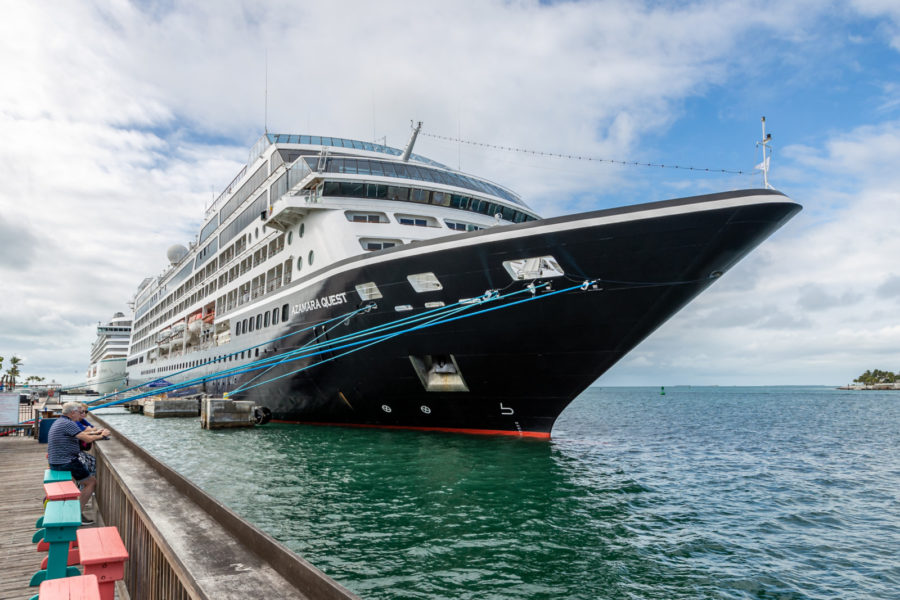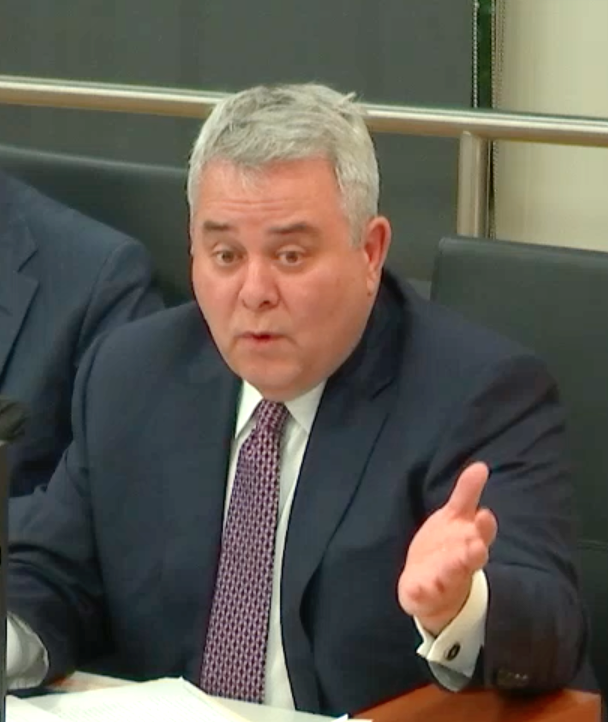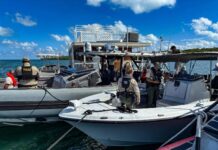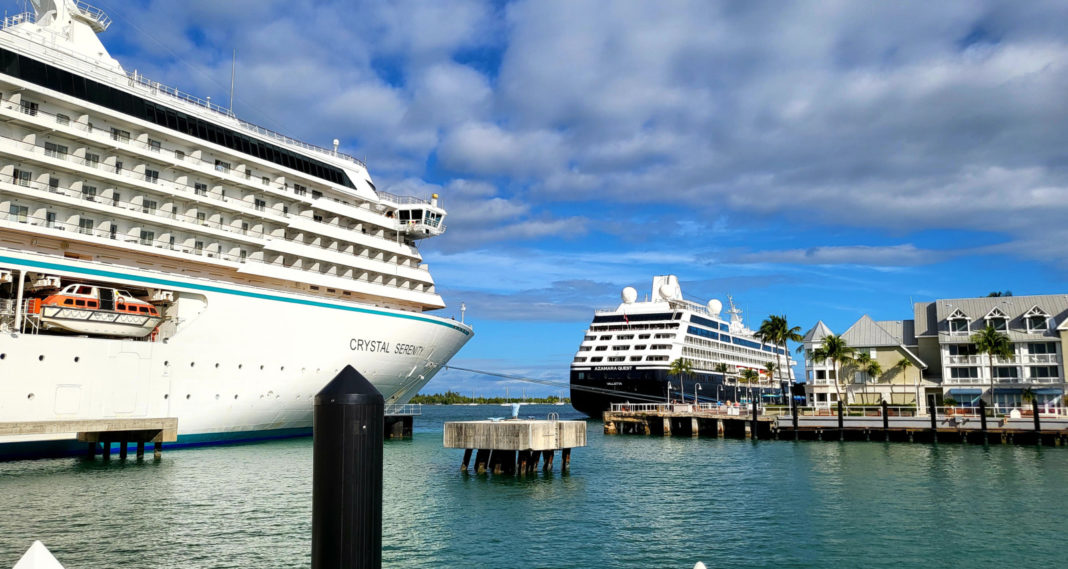Cruise ships of all sizes will continue to visit Key West, one at a time, docking only at the privately run Pier B. The two city-controlled docks will only host smaller ships, and only if no ships are at Pier B.
On the advice of their attorney…
A new cruise ship resolution, passed by city commissioners on March 10, acknowledges what their attorney had advised nearly a year ago: The city has no authority to restrict ships at Pier B. Bound by an inescapable 1994 contract, City Attorney Shawn Smith warned commissioners in July 2021 that any attempt to limit ships at Pier B would result in a crippling lawsuit.
“My job is to protect you and the city from liability,” Smith told the commission eight months ago. “And I’ll tell you, I think Pier B sues us. I don’t think it’s a threat; I think it’s legitimate and I think it will be a breach of contract claim and an interstate commerce claim.” Mayor Teri Johnston criticized the city’s agreement with Pier B that renews automatically unless both sides agree to end it. Johnston asked Smith how the city could get out of that contract, to which the city attorney replied, “We pay.”
Months later, commissioners were still intent on implementing significant cruise ship reductions at all three piers, as proposed by the Key West Committee for Safer Cleaner Ships and approved by 62% of voters in November 2020. So they hired outside counsel, attorney Ed Pozzuoli, to help draft and defend the new cruise ship limits. But Pozzuoli, like Smith, strongly advised the commission not to interfere with ships at the private Pier B, given the contractual agreement, which was written by the late attorney Jim Hendrick. He repeated the warning at the recent special commission meeting.
“Two outta three ain’t bad”
Commissioners instead voted on Thursday, March 10, to send all cruise ships to Pier B and close the two city-controlled docks, Mallory and the Outer Mole piers, to nearly all ships.
“It is the intent of the city commission that all cruise ships will dock at a designated, non-city controlled pier at the City of Key West, known as Pier B….When a cruise ship is docked at Pier B, no cruise ship will dock at a city of Key West-controlled property,” the approved resolution states. The city’s two docks may only be used when no ship is docked at Pier B, and then only by smaller ships — with up to a 1,300-person capacity.

The beginning of the end?
Thursday’s unanimous approval nearly ends the contentious, two-year effort to markedly curtail Key West’s cruise ship tourism. “We recognize that this does not get us what we wanted, which was sensible limits at all three piers, but it allows the city to do what it wishes with its two piers,” Evan Haskell, president of Safer Cleaner Ships, said at the March 10 special meeting, urging the commissioners to approve the proposed resolution.
Key West business owner Ed Swift spoke in opposition to the resolution, and criticized the city’s willingness to forgo cruise ship revenues by closing Mallory and the Outer Mole piers.
“The Mole Pier income was earmarked to help fund the upkeep of Truman Waterfront Park and the loss of income from Mallory will now have to be made up by the Key West taxpayers,” Swift said, ticking off additional financial losses that could result from the pier closures. “The city cannot keep balancing its budget by raising parking fees,” Swift said. “Key West is dodging a bullet by not infringing on Pier B’s business operations, and I thank you for that, but this resolution is a disaster for our city and will echo for years to come.”
Arlo Haskell, treasurer of Safer Cleaner Ships, acknowledged that, “Truman Waterfront Park is one of the greatest city assets in Key West, and when I saw that the Outer Mole’s cruise ship funds were designated for its upkeep, it gave me pause.”

But, Haskell told the commission, the Outer Mole, which the city leases from the Navy, operated at a loss in 2018 due to the city’s contract with Swift’s company, Historic Tours of America, which charges the city to shuttle cruise passengers across restricted Navy property and into the downtown area. The tour company in turn pays the city 5% of its revenue as part of a franchise agreement. Haskell added that Mallory Pier’s cruise ship profits after expenses in 2018 were only $100,000, an amount that could be made up elsewhere in the city budget, he said.
“We’ve repeatedly heard that the city can do what it wants with its two piers,” Arlo Haskell said. “Months ago, you heard me say I would never settle for a carve-out for Pier B [from the voter-approved ship reductions]. But the name of the game is compromise, and we’re now asking you to do what you’ve said you can do with the city’s piers.”
And they did.
So what’s next?
The commissioners on Thursday also approved a first reading of a new ordinance that prohibits water pollution from cruise ships, designates a fund for coral restoration that will come from a $1 per passenger donation from the owners of Pier B and establishes a water quality testing program. That environmental ordinance will be tweaked before its second and final reading on April 5 to clarify the water quality specifications.
Discussions continue between the city and Pier B about potential changes to the cruise ship agreement. Thus far, Pier B has agreed to five potential black-out days of no cruise ships and a maximum of 349 days per year that ships can dock at Pier B.
“The historical high was 247 days of ships at Pier B,” Arlo Haskell told the commission on March 10. “I don’t think the city should be authorizing more and bigger ships at Pier B. I think if we could go back in time, we would set things up differently, such as with the [contract] with Pier B, which renews in perpetuity. The big problem I see with this draft amendment to the Pier B agreement is that it also runs in perpetuity. I think any future agreements with Pier B should have a means for the city to get out of it.”
But attorney Ed Pozzuoli again emphasized that the city has no authority to expect or demand any concessions, limitations or amendments from Pier B due to the agreement the city signed more than 25 years ago. That long-standing contract authorizes Pier B’s cruise ship operations and requires the company to give the city 25% of cruise ship disembarkation fees. The agreement contains no limitations or restrictions on cruise ships, other than to say Pier B may host up to seven ships a week, including three overnight port calls.

Nothing in the existing agreement talks about any operational limits, Pozzuoli said on March 10, adding that the contract in fact requires Pier B to use its best efforts to maximize cruise ship revenues, which it has shared with the city for more than two decades. “So any changes to that agreement have to be something [Pier B] agrees to voluntarily, because there’s no authority we have to require it,” he said.
City Attorney Shawn Smith said he plans to have a final proposal from Pier B prepared for the April 5 city commission meeting. Commissioner Jimmy Weekley has asked the city’s attorneys to include negotiations for the city’s use of Admiral’s Cut in the ongoing discussions. Admiral’s Cut is a slice of water, about the size of a large boat slip, that’s owned by Pier B and the adjacent Opal Key Resort. The cut separates the resort’s waterfront shopping promenade from the city-owned Truman Waterfront. A footbridge over Admiral’s Cut would allow pedestrians to walk along the waterfront from Mallory Square to the Truman Waterfront, which city officials have long desired. It is unknown how the Admiral’s Cut discussions are going.
A full video of the March 10 city commission meeting is available at cityofkeywest-fl.gov.




















